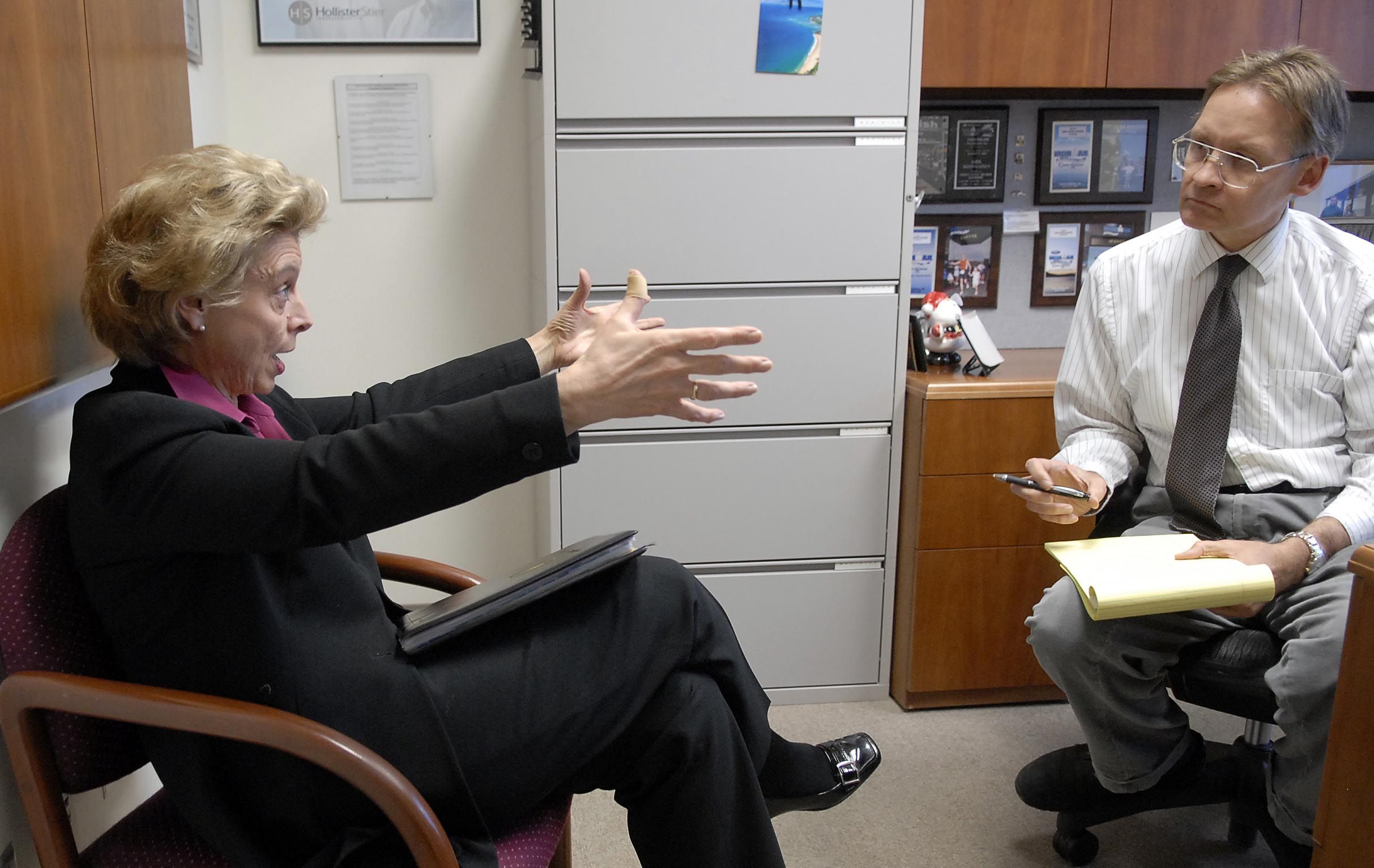A deep dive into the presidential results in Spokane County
In the years to come, volumes will be written about the disaffected voters of 2016, complete with long interviews plus charts and graphs to show how unhappy some of them were with their choices for president this year.
You could wait for the doctoral dissertations for proof, or you could look no further than the numbers being tallied in the Spokane County elections office. This is not to say that Spokane results are indicative of anything but Spokane County, but they do point to a shift in the electorate over the last three presidential elections.
Considering the presidential race is almost always the biggest draw in a year divisible by four, it is at least interesting and probably very telling that almost three times as many Spokane voters refused to mark their ballot for anyone for president compared to 2008, and about twice as many as 2012.
The number of voters choosing anyone but Donald Trump or Hillary Clinton was also sharply up from the two previous elections. There were also three times as many votes for third party candidates and almost four times as many write-ins. Let’s break down the numbers.
First, it’s important to remember that the county as a whole votes Republican in presidential elections, although the city of Spokane trends Democratic. That hasn’t changed for decades.
But in 2008, in the race between Barack Obama and John McCain, it almost did.
Obama was ahead on election night; when all the votes were in and counted some two weeks later, McCain was up slightly more than a percentage point, 48.8 percent to 47.6 percent.
If you just said, “Wait a minute. That doesn’t add up to 100 percent!” give yourself a gold star. The totals for the two major candidates in the presidential race never add up to 100 percent. Some voters cast their ballots for third party candidates, some write in a name of someone they like better, or don’t vote for anyone. These numbers shifted in 2016.
Eight years ago, slightly more than 3.6 percent of Spokane County voters opted out of the McCain-Obama race. About 5,400 picked third-party candidates, about 1,500 wrote-in someone else and 942 left the race blank, which is called an undervote. Another 177 either got sloppy, had a change of heart or couldn’t make up their minds and filled in two or more ovals, called an overvote, so no one got credit for them.
Four years later, Obama got 45.3 percent in Spokane County compared to Mitt Romney’s 51 percent, so the chunk of folks who voted in the other categories went up a smidge, with the biggest percentage bump in that gap showing up as undervotes; 1,318 voters left that one blank.
All the votes haven’t been counted yet for 2016, but already we know that Trump was a bit less popular overall, and Clinton significantly less so, compared to major party candidates of the last two campaigns. Trump is currently at 48.1 percent and Clinton at 40 percent. That leaves a gap of about 12 percent
Another way to look at it: In the previous two presidential elections, although Spokane County went Republican for president Obama got more votes in the county than the Democrats running for governor. In 2012, Romney got more votes than the Republican running for U.S. Senate, and George W. Bush did better than the GOP Senate candidate in 2004. (There was no Senate race in Washington in 2008.)
This year, both candidates have significantly fewer votes from Spokane County than the gubernatorial or Senate candidates from their parties. Clinton is on track to get fewer votes in the county than the Democratic candidate for Congress, Joe Pakootas, something that hasn’t happened since 1996. Trump is significantly behind U.S. Rep. Cathy McMorris Rodgers, but she usually outpolls the GOP nominee.
Where did those votes go?
Some 18,500 Spokane County voters went for third party candidates, more than three times as many as 2008. Another 8,000 wrote in another name, almost six times as many as eight years ago and four times as many as 2012. Part of that could be chalked up to supporters of Bernie Sanders or one of the GOP hopefuls who lost in the primaries sticking with their guy. There was also a concerted effort by some establishment Republicans to coalesce behind Evan McMullin, who didn’t start his campaign soon enough to qualify for the Washington ballot.
Except for the Republican state party chairwoman who insisted Trump was going to capture Washington, the outcome of the statewide presidential race wasn’t in doubt. So some unhappy Democrats and Republicans may have felt free to vote their conscience or their whim. But that also was true in the two previous elections. And for those who believe the old George Wallace adage of there not being a dime’s worth of difference between Democrats and Republicans – possibly less true than any year since William Jennings Bryan ran against William Taft 1908 – they had a Libertarian, a Green Party candidate, a Constitutionalist and two Socialists.
Jill Stein of the Green Party and Libertarian Gary Johnson were both on the ballot for a second time. She did three times better than 2012. He did almost four times better.
Another 2,600 – almost triple the number and the percentage from 2008 – essentially said “none of the above” by leaving the presidential race blank. While that’s still the race with the fewest undervotes countywide, when combined with all the other options for the presidential race it shows a marked increase in dissatisfaction with the end result of the major parties’ nominating process.
